Pioneers from cats to vending machines
- July 18, 2023
- Steve Rogerson
Steve Rogerson visited last week’s Hardware Pioneers Max show in London.
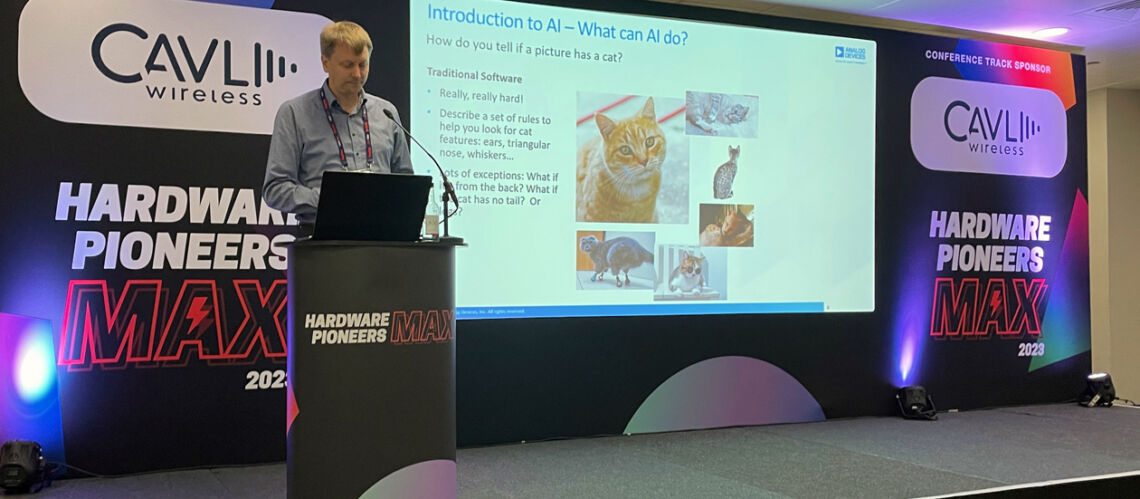
How do you know that a cat is a cat? That may seem a silly question but it can be a very tricky task for a computer to identify a cat in a photograph.
This problem was how Ole Dreessen, a field applications engineer at Analog Devices, opened up the conference at last week’s Hardware Pioneers Max (HPM) show in London. Using traditional software, he said, it was very difficult to programme a computer to decide whether a picture contained a cat. This was because it was rules based, and there were lots of exceptions.
Artificial intelligence (AI) in the form of a neural network has changed all that. You can train these networks by showing them millions of pictures of cats – presumably obtained from a quick look through Facebook – so they can spot a cat when they see one again.
“It can thus distinguish a cat from a horse, or a bike, or whatever,” he said.
So why was he telling us this? Well, getting computers to do these things on their own is a key part of AI at the edge, which will be essential for all sorts of IoT applications that cannot afford the latency involved when data travel back and forwards to the cloud.
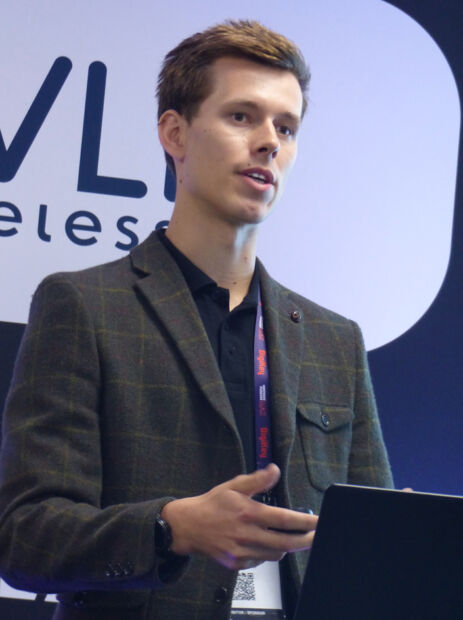
“And AI at the edge means we are not reliant on internet access,” said Will Mitchell, another field applications engineer, this time at electronics distributor Anglia.
Take self-driving cars or face recognition security systems, you don’t want a delay in passing information back to the cloud. It can also be essential for active noise cancellation systems, object detection and people counting.
This was an interesting start to an interesting show. I had not been to HPM before, which apparently started off as some sort of hackathon before reinventing itself and benefiting from being one of the first live IoT events in the UK to be held as we came out of lockdown last year.
It is not a big show, with about eighty exhibitors and only lasting one day, but it was unusual for a British show in that the people through the door were real engineers with real problems. Now, we are used to seeing that with the big events in Germany such as Embedded World and Electronica, but UK firms tend to shy away from trade shows as they see them as a bit of a jolly, believing their engineers use them as an excuse to have a day out of the office without doing any work.
As such, the UK has focussed more on technical conferences rather than exhibitor-based trade shows. This event seems to have bridged the gap.
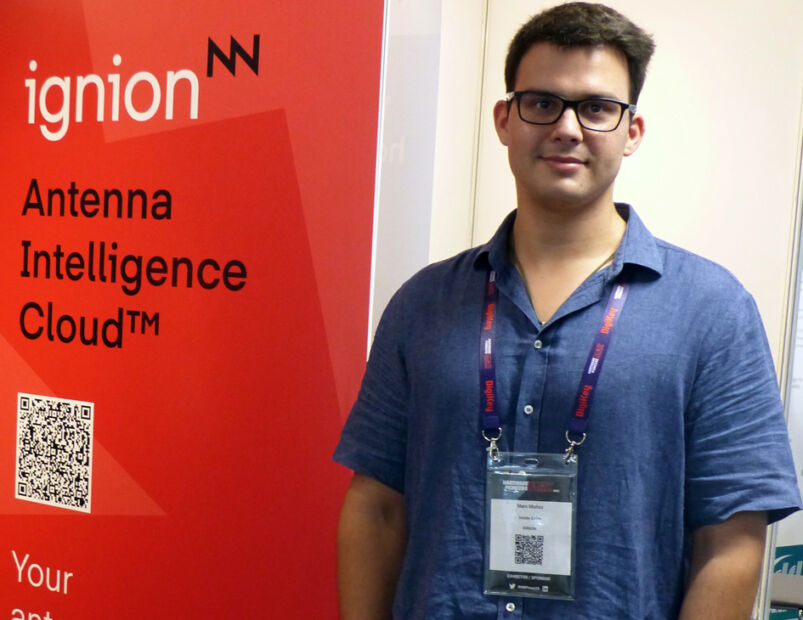
“It is a good show to go to for us,” said Marc Muñoz from Spanish antenna firm Ignion. “It is the best we have seen for us in the UK. Anyone who comes here is looking for solutions and we are part of that, because they all need antennas. With no antenna there is no connection and so no IoT. It is a small show but it is filled with people.”
UK IoT connectivity firm Eseye focuses on helping companies with reliable connectivity wherever they are in the world.
“You can find a lot of local issues,” said Paul Marshall, CCO of Eseye, “so we help our customers deploy what they want and we look after the rest. Every one per cent of lost connectivity is very expensive, so you have to get close to one hundred per cent because that is what really makes the IoT fly.”
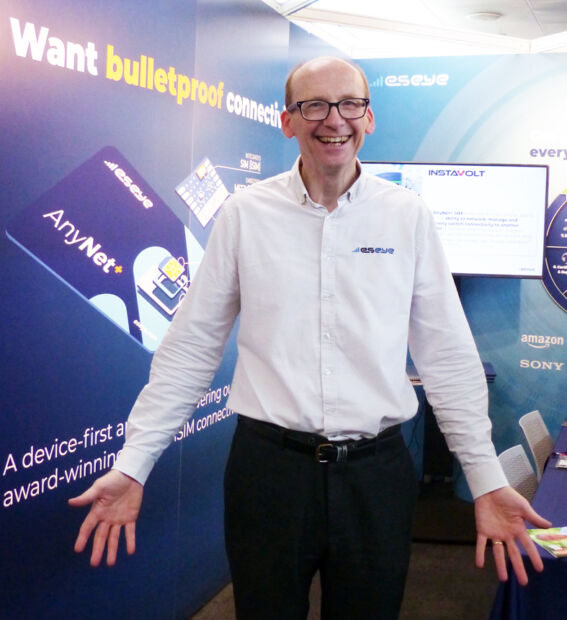
One of the biggest difficulties with this is testing in different situations.
“We can create these unusual network scenarios in our test lab,” said Paul. “The customer can look at their device and understand what the hardware and software are doing.”
He said he found the show really interesting as he got to meet people he didn’t see at other shows.
“These are people who are trying to build products and make them work,” he said. “They know that designing the connectivity really matters and that makes it really exciting to talk with them.”
Digi has seen itself transform over the years from a company that was basically hardware and added some software for free to one that is more focused on software and cloud-based services.
“In the past six months we have not only launched a plethora of hardware tools but launched new software and services tools,” said Ronald Singh, a sales director at Digi. “We don’t give them away for free; we would be fools if we did. Before, we literally gave away the software as a key differentiator for our hardware, but you can’t do that as a business model now.”
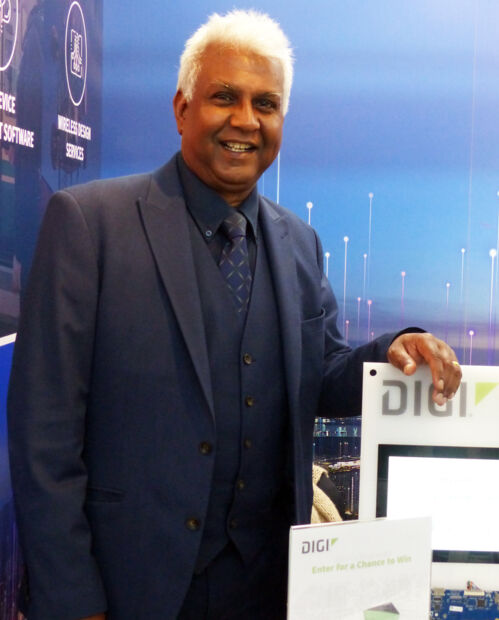
He said part of this was helping its customers make money without relying on shipping physical goods. For example, in industrial they can use devices to monitor equipment so rather than having fixed maintenance intervals that could disrupt production, they can offer maintenance contracts based on when the equipment looks likely to develop a fault.
This also works with vending machines to monitor when supplies are running low and for dynamic pricing where the prices of goods may change during the day. The vending machine owners can also have an extra revenue stream by putting different ads on the vending machine screens.
This is the third time Digi has been at HPM and last year was the first time it had its own stand rather than being with one of its distributors.
“I am pleased with the footfall,” said Ronald. “We are having engagements with potential clients. I also did a keynote here and had people talking with me as a result. There is a wide variety of customers. There are also some students, and I am always happy to talk with students.”
He said shows such as Embedded World were calendar events with lots of product launches but a show such as HPM was for meeting real customers who wouldn’t have the budget to fly out to Embedded World.
“We wouldn’t meet them there but we do meet them here,” he said. “We can talk with a large number of customers or potential customers that we wouldn’t normally meet.”
• While I was at the event, I also had a long chat with Adam Cousin from Telit about the changes happening at the company. You can read about that here.




